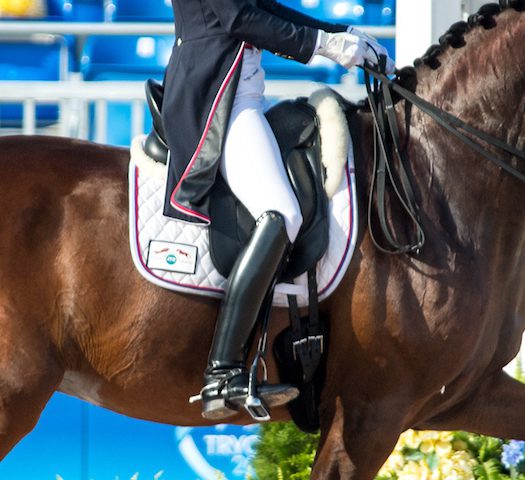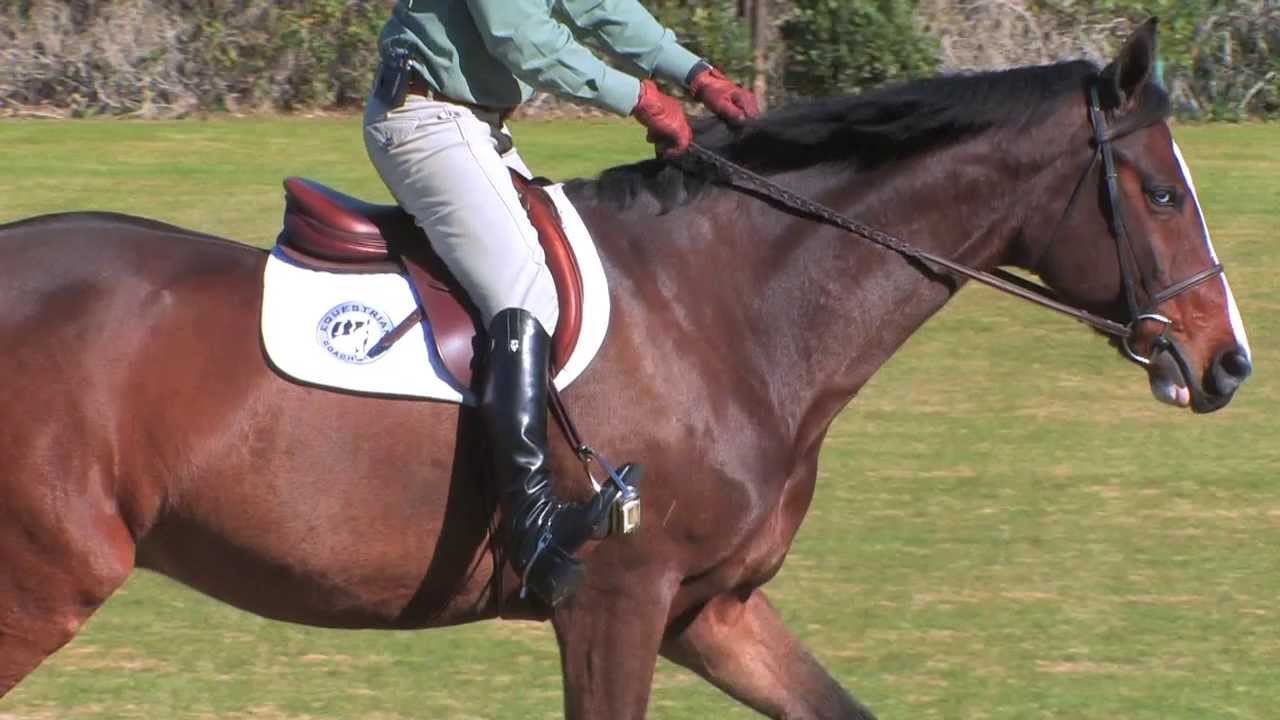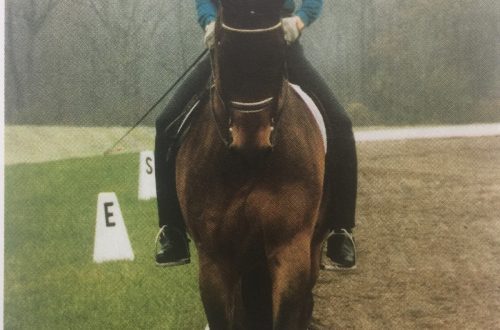
Three Exercises for Dressage Riders to Help Keep Your Heel Down
A common problem especially faced by dressage riders is the heel rising in the stirrup. When the heel is up, the rider cannot properly use his leg, his calves, and instead of this he constantly sends the horse with his heels. If your foot is in the wrong position, then your landing is immediately distorted and the effectiveness of the controls is reduced. The leg should not be far behind the girth and lie on the horse’s shoulder, the heel should be kept down, and in no case should it be held by the knees, resting on the saddle!
American rider, multiple medalist in dressage, Gigi Nutter, spoke about three interesting and useful exercises that will help you learn to keep your heel down.
Photo Shoot: Dressage Today
The first thing Gigi advises is to ride in show jumping, as show jumpers have short stirrups, which allows you to stretch the calf muscles as much as possible – this will help lower your heels. Your ankles, muscles and tendons should be flexible and act as a shock absorber during the horse’s movement, when they are trained, you can drop your heels with long stirrups, as is customary in dressage.
On the step, stand in the stirrups, taking a show jumping position, and lower your heels down as much as possible, stretching your muscles. It is important that you just lift your buttocks off the saddle, transfer your weight over your knees and down through your calves, pulling your heels hard. Once the rider is able to stay balanced and maintain the correct seating position at the walk, then it can be started in the trot and canter. It’s difficult but effective!

For the second exercise, you will need a ladder or step platform for fitness: stand on the edge of the step, leaving your heels on weight. Make sure your heels hang down as much as possible. It is important here to keep the leg muscles relaxed in order to stretch them as much as possible.
Once you’ve stretched your calf muscles sufficiently, place an exercise ball between your legs to simulate horseback riding. This will allow you to compress your calves (leg send) and keep your heels down at the same time.

Photo: Dr Peggy Malone
Finally, the third exercise is riding without stirrups. Lower your legs down and begin to draw imaginary circles with your toes, rotate your ankles, pulling your heels down. Try it at the walk first, then you can move on to trot and canter, but only if you are not sitting on a young or well-trained horse.
Photo: Equisense – Blog
Finally, Gigi recommended teach your horses to react quickly to the leg, it is also necessary to maintain correct leg position. The horse should hear the slightest pressure with the foot to the side.
Sourced from Dressage Today.




